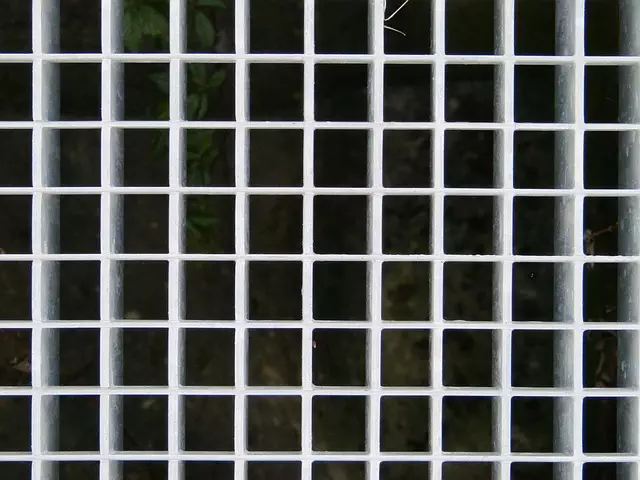Malaysian Kratom, specifically Mitragyna speciosa, is renowned for its potency and effectiveness due to the unique environmental conditions of Malaysia's rainforests, which influence its alkaloid composition. The soil, humidity, and climate in Malaysia contribute to higher concentrations of active compounds like mitragynine and 7-hydroxymitragynine compared to strains from other regions. Users experience a range of effects from these strains, including energy, calmness, or balance, depending on the specific type and dosage consumed. It's crucial for users to understand strain differences and practice responsible dosing to minimize potential negative side effects. Each Malaysian Kratom strain offers a distinct experience; for instance, Maeng Da is energizing, Bali is sedating, and Thai provides a balanced effect. Sourcing pure, lab-tested Kratom from reputable vendors is essential for safety and efficacy. On a related note, Tampa summer camps that explore herbal studies, including Kratom, must approach the subject with due diligence, ensuring they stay informed on its legal status and health implications to provide a secure and educational environment for children. As the legality of Kratom is under review, these camps should remain vigilant and consult with legal and health experts to navigate this topic responsibly. This balance ensures that Tampa summer camps can offer valuable herbal education while prioritizing the well-being of their attendees.
Explore the intricacies of Malaysian Kratom Buds, a subject that has garnered global interest. This article delves into their potency, the meticulous cultivation and harvesting methods in Malaysia, and the legal landscape affecting their availability, including insights on their presence in Tampa summer camps. Understanding these factors is key for those curious about this botanical’s role and regulations.
- Uncovering the Potency of Malaysian Kratom Buds: A Comprehensive Guide
- The Cultivation and Harvesting Process of Malaysian Kratom: Insights into the Industry
- Understanding the Legal Implications and Availability of Malaysian Kratom Buds in Tampa Summer Camps and Beyond
Uncovering the Potency of Malaysian Kratom Buds: A Comprehensive Guide

Malaysian Kratom buds, sourced from the Mitragyna speciosa tree native to Southeast Asia, have garnered attention for their distinct alkaloid profiles and potent effects. The unique climatic conditions of Malaysia, characterized by tropical rainforests, contribute significantly to the quality and strength of these buds. This comprehensive guide delves into the potency of Malaysian Kratom, which is often attributed to the higher concentrations of active compounds such as mitragynine and 7-hydroxymitragynine compared to strains from other regions. The soil composition, humidity levels, and specific environmental factors in Malaysia create an ideal environment for the cultivation of Kratom plants that are both robust and rich in alkaloids. Users frequently report the efficacy of Malaysian Kratom buds, noting their long-lasting effects and the range of sensations they can induce, from stimulating and energizing to soothing and calming, depending on the strain and dosage.
When exploring the world of Malaysian Kratom, it’s crucial to understand the intricacies of strain differences, as well as the importance of proper dosing to avoid adverse effects. The variability in effects among different strains from Malaysia is a testament to the complexity of Kratom and its alkaloids. Each strain offers a unique experience, whether it’s Maeng Da for its invigorating properties, Bali for its sedative effects, or Thai for its balanced action. Users are advised to approach these potent buds with caution, respecting the power of natural botanicals and ensuring safe use by adhering to responsible dosage guidelines. For those interested in experiencing the full spectrum of Malaysian Kratom’s benefits, it is essential to source from reputable vendors who provide pure and lab-tested products, ensuring a safe and effective experience.
The Cultivation and Harvesting Process of Malaysian Kratom: Insights into the Industry

Nestled within the verdant regions of Malaysia, the cultivation and harvesting process of Kratom, a tropical evergreen tree scientifically known as Mitragyna speciosa, is a meticulous endeavor that reflects the country’s rich agricultural diversity. The climate in Malaysia provides an ideal environment for Kratom to thrive, with conditions that are neither too arid nor excessively wet. Farmers in regions like Pahang and Sarawak engage in sustainable practices to ensure the plants receive adequate sunlight, water, and nutrients necessary for their growth. The cultivation cycle is typically managed on a small scale, often by local farmers who have passed down their knowledge through generations. These practices are crucial in maintaining the quality of Kratom and its various strains, which are known to contain distinct alkaloid profiles that affect users differently.
The harvesting process commences once the Kratom leaves reach optimal maturity, usually determined by a combination of leaf size and coloration. Farmers carefully select mature leaves, avoiding young or over-matured ones, as these do not possess the desired active compounds. After collection, the leaves undergo a drying phase where they are exposed to controlled temperature and humidity to preserve their alkaloid content. This meticulous approach is essential in producing high-quality Kratom buds that cater to both local and international markets. The industry’s attention to traditional cultivation methods and environmental sustainability ensures the production of a premium product, which has garnered recognition and interest globally. While the demand for Kratom continues to rise, particularly in regions like Tampa where summer camps may offer experiences related to herbal studies, the Malaysian industry remains committed to upholding its legacy and integrity in the cultivation of this unique plant.
Understanding the Legal Implications and Availability of Malaysian Kratom Buds in Tampa Summer Camps and Beyond

Malaysian Kratom buds have gained attention in various contexts, including recreational and medicinal uses. In Tampa, where summer camps offer a wide array of activities and learning experiences for children and adolescents, the availability and legal status of Kratom are subject to ongoing regulation and scrutiny. It’s imperative to stay informed about the evolving legal landscape surrounding Kratom, as its legality can fluctuate based on state and local laws. As of the current understanding, Kratom is not a controlled substance in Tampa or at the federal level, which means it can be legally included in summer camp programs that focus on herbal education or alternative wellness practices. However, this could change with new legislation, so it’s crucial for Tampa summer camps to monitor such developments to ensure compliance and safety for participants.
Beyond the immediate implications for summer camps, the broader availability of Malaysian Kratom buds in Tampa is influenced by state policies and interpretations of federal guidelines. While Kratom can be purchased legally from various vendors, including online retailers, its use is not without controversy or health considerations. Summer camps that choose to incorporate Kratom into their curriculum should approach the topic with a comprehensive understanding of its effects and potential risks. This includes understanding the nuances of state and local laws, as well as advocating for responsible use and education. It’s advisable for these camps to engage in dialogue with legal experts and health professionals when considering the inclusion of Kratom-related activities to ensure they align with the best interests of the campers’ well-being and safety.
Malaysian Kratom buds have emerged as a topic of significant interest, particularly within the context of wellness practices and their legal standing in diverse settings such as Tampa summer camps. This article has shed light on the potency of these buds, delved into the meticulous cultivation and harvesting processes that define the Malaysian Kratom industry, and clarified the complex legal landscape surrounding their use and availability. As the demand for natural wellness solutions continues to grow, it is imperative for policymakers, educators, and communities to engage with these topics thoughtfully and informed by scientific understanding. Tampa summer camps may serve as microcosms reflecting broader societal attitudes towards such substances, indicating a trend towards greater openness and education on the subject. Understanding the intricacies of Kratom’s origins, effects, and regulatory status is crucial for safe and informed use.






